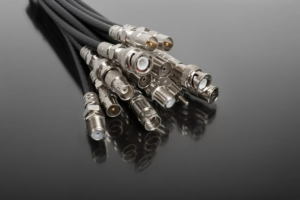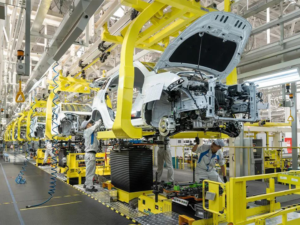High voltage wiring harness connection method
1.Crimp connection
Crimp connection is to use tools or equipment to deform the connector joints and press them onto the wires through pressure, so that the terminals of the connector and the wires form a mechanical connection, giving them good mechanical and electrical properties. At present, there are three known connection methods for automobile wiring harnesses, but foreign wiring harness cables and plug-in terminals are basically connected by crimping. This process technology is very mature and stable and suitable for actual mass production.
Advantages of crimp connections:
- Reliable connection, high production efficiency and adaptable to automated production;
- The connection process does not require solder and flux, which overcomes the difficulty of cleaning the weldment and the easy oxidation of the welding surface;
- At the same time, the crimping process has low environmental requirements, is simple to operate, and is not prone to human failure. However, its shortcomings are also obvious. After crimping, there is still incomplete contact of the wires, and the contact resistance increases during long-term operation. Eventually, the joints are prone to heat and the power loss is increased, affecting the safety of the circuit.
Among them, the crimping height plays a vital influence on the crimping connection. The mechanical properties of crimped terminals will increase as the crimping height decreases, but after exceeding a certain critical value, the mechanical properties will drop rapidly; the electrical properties of crimped terminals will first increase as the crimping height decreases and then tend to level, and finally gradually decreased. Therefore, it is necessary to determine an appropriate crimping height to ensure good mechanical and electrical properties as much as possible.
2. Welding connection
Since traditional welding processes are no longer able to meet development needs, ultrasonic welding processes are gradually being used in the welding of high-voltage wire harnesses for new energy vehicles.
The advantages of ultrasonic welding process are:
- The welding range is wider, not only suitable for the same kind of materials, but also the welding between dissimilar materials with different properties can achieve rapid prototyping effect;
- The welding strength is higher. The use of ultrasonic welding does not require external heating of the welded specimen, so there will be no residual stress due to heating of the specimen. At the same time, higher welding strength, better stability and fatigue resistance will be obtained. strength;
- Welding efficiency is higher. Ultrasonic welding does not require welding rods and cooling operations. It can quickly complete spot welding, continuous welding and other operations, and saves more power consumption;
- It is safer and more environmentally friendly. Ultrasonic welding does not require additional flux and will not pollute the structure of the weldment, ensuring the integrity of the weldment to the greatest extent.
shortcoming:
- As the thickness and hardness of the welding workpiece increase, the difficulty of welding increases sharply, and the required welding power is higher, which indirectly increases the manufacturing difficulty and cost of high-power ultrasonic welding machines;
- The expanded surface of the ultrasonic welded workpiece will be relatively wide, making it difficult to install in a narrow location.





